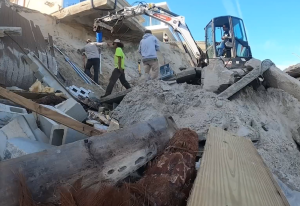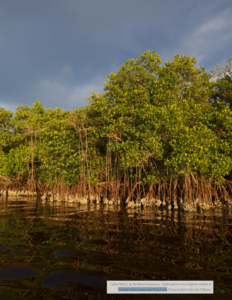Is it enough to save our beaches?

Reconstruction of an oceanfront home in Wilbur-by-the-Sea on Florida’s East Coast damaged by erosion in Hurricane Nicole, November 17, 2022
The coastline of Florida is sadly still recovering from the compounding damages of hurricanes Ian and Nicole from last fall. In response, the U.S. Army Corps of Engineers has awarded a $47.6 million contract to rehabilitate an 11.5 mile stretch of Brevard County beaches. This 100% federally funded project hopes to replenish sand on critically eroded beaches from Patrick Space Force Base south to Melbourne Beach using 1.1 million cubic yards of sand dredged from an approved offshore borrow site. The project will be ongoing through April 2025, in compliance with environmental regulation to protect beach wildlife. The beaches suffered tremendous erosion from storm surge, especially during Hurricane Nicole.
It’s no secret Florida has a beach erosion problem. According to the Environmental Defense Fund, some $30-50 million is spent each year by local governments alone to spray new sand all down the golden coastlines in a process called beach nourishment. Beach nourishment is especially attractive because it works rather immediately – sand is replaced and the scenery is maintained for another season, allowing beachgoers and all other visitors plenty of real estate on the shore. This is very attractive to local governments, who usually foot the bill on much of their own ecological conservation, but this solution is only temporary. It lasts until the next storm season rolls around and the beaches are devastated once again, requiring even more funding. With local and state funding always in flux or gridlocked, it is imperative to find the most cost-effective solution to keeping our beautiful beaches better intact for years to come.

Oysters grow on the mangrove coastline of
Charlotte Harbor Estuary near Punta Gorda, Florida. Courtesy, Carlton Ward Jr. @ The Nature Conservancy
Scientists at the University of Miami are looking into this exact issue, finding what combination of factors leads to the cheapest and most sustainable coastline protection. They’ve teamed with the U.S. Department of Defense to develop “hybrid reefs” made up of concrete structures and living coral reefs and oyster beds to break up damaging waves. Through extensive study of natural and artificial reefs, scientists have found that healthy natural reefs alone can dissipate wave energy by up to 97%, saving beach communities and ecosystems a lot of trouble. Other natural dissipaters include dunes, mangroves, and barrier islands. Mangroves and other trees have very strong root systems that hold on to sediment and absorb much of the initial energy of storms and waves, providing a much more stable environment beyond the frontlines. By emulating the structure of these natural barriers along the coasts, Florida state and local officials can better plan on how to anticipate and lessen the damage of some of the wilder parts of the natural world – while addressing cyclical issues caused by human activity and development.
LMA Newsletter of 10-9-23

